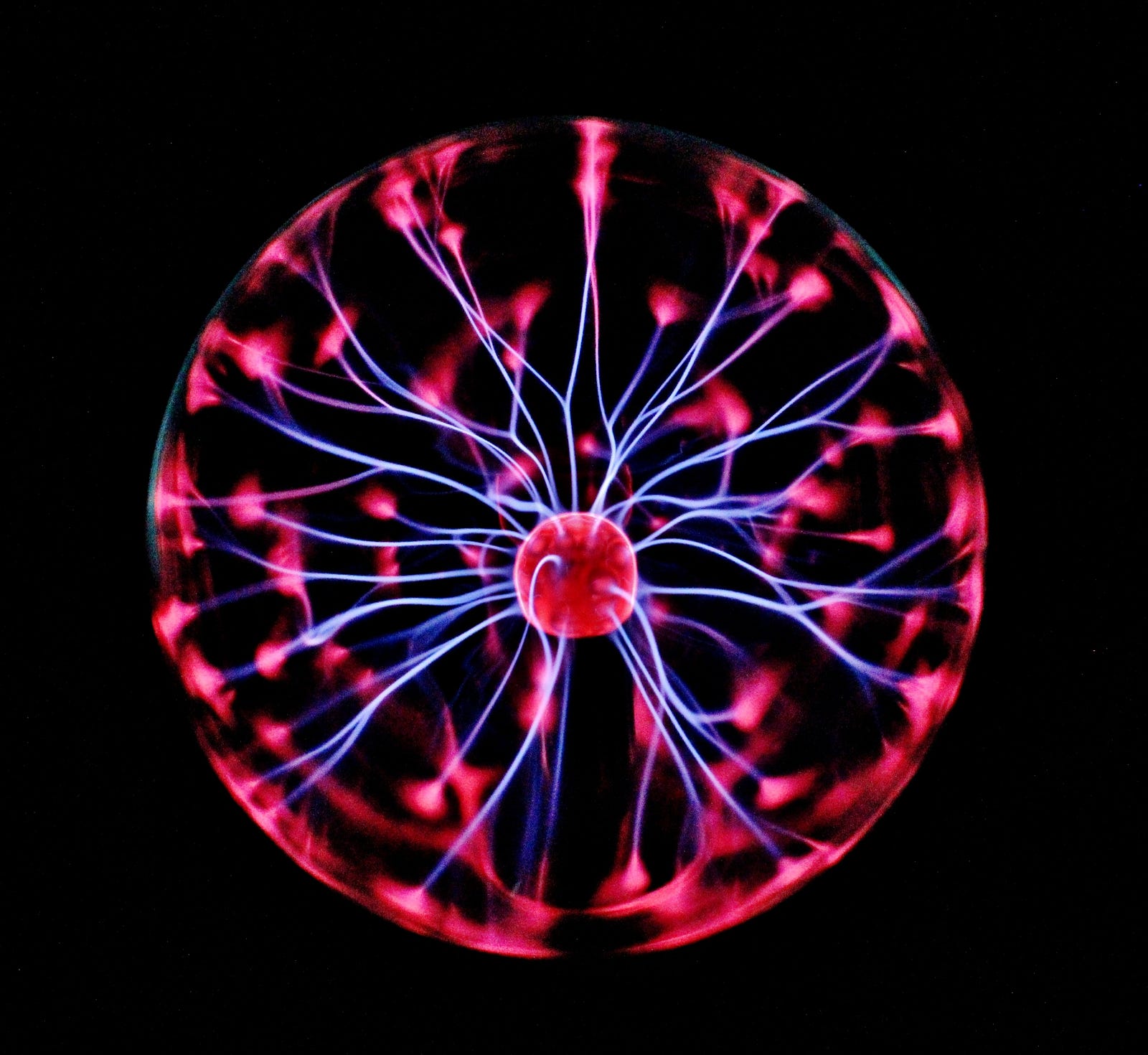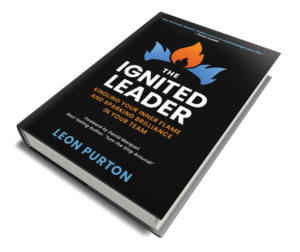
Learn any skill, increase your productivity and improve your work quality
In a world where you rarely need to discover information, where you can use the internet to find it. How important is intellect?
One of my favourite quotes regarding this is by William Gibson and in it he hints that you are only ever learning something someone else has discovered.
The future is here, it just not very evenly distributed.
If this is true, and there are very few of us out there stretching the boundaries of the unknown, do you really need to be smart — or just focused?
Personally, I believe that with enough singular focus, you can do anything. The problem is all the distractions. In a modern world, it is focus that is the new IQ. As a person who tends to be more comfortable trying to do many things at once, it has taken me some time to figure out what works for me. When I get it right though, I am capable of things that surprise even myself.
In this piece, I’ll give you some background, understanding and my process for getting focused work done. 60% of the time it works every time….
A Computer Science Professor who writes
Cal Newport, a computer science professor at Georgetown University, wrote the book “Deep Work: Rules for Focused Success in a Distracted World” in which he describes that it is those who can minimise distractions and remain focused that succeed.
In this book Cal espouses the two critical skills to have in today’s economy;
· The ability to master hard things quickly
· The ability to produce at both high quality and speed
Fundamentally, these two characteristics cannot be achieved when you are distracted. It takes ‘Deep Work’ to achieve these two things. The below video describes some of the principles from the book, but if you do not want to watch, I‘ll briefly describe the difference between Shallow and Deep Work, then explore the mindset required.
Shallow Work
Cal uses a pretty simple description for this… Could you easily train someone else to do it? Or more specifically (and with long words), “non-cognitively demanding, logistical-style tasks, often performed while distracted. These efforts tend not to create much new value in the world and are easy to replicate”.
These are the tasks that feel good to do, because you seem busy and like you are accomplishing something, but they aren’t very meaningful. My most common shallow work is to move and respond to emails. Even doing this I get distracted with office conversations, latest news updates from around the globe, IM chats and snacks. That’s the beauty of it, I can feel like I have achieved something, and not done anything at the same time. Sort of like cleaning the toilet while using it. Although, I am not sure how you’d actually do that!
I am not saying that shallow work is useless, but it doesn’t make you any smarter. It doesn’t let you stand out from the crowd; it is just keeping you busy. Most jobs require a great deal of shallow work to keep the organisation functioning. Information needs to flow, spreadsheets need to be updated, presentations need tweaking, reports need to be filed, and papers need to be shuffled. The most important thing about shallow work, is recognising it, and then setting yourself some boundaries for it so that you can allocate time for Deep Work. You can get better at shallow work too, if you set yourself some timelines and boundaries.
Deep Work
You want to get smarter, learn something new, develop or change a strategy, produce something of quality, create something, do something difficult as quickly as possible you need to get out of the shallows. You cannot do it while you are distracted. Deep work is described by Cal Newport as; ‘professional activities performed in a state of distraction-free concentration that push your cognitive capabilities to their limit. These efforts create new value, improve your skill, and are hard to replicate’.
As Cal notes, these push your boundaries, they force you to grow. It is harder, but far more rewarding. It is in Deep Work, that you get smarter, exceed productivity expectations and work at a high quality.
For me, this type of focus is where the best work comes from. I have used these deep work sessions to stand out from the crowd. The best thing, is that you can do it too.
The below video describes some of Cal’s book.
Deep Work Mindset

Bi-modal vs Blocked Allocation
Of note, and important to understand about deep work, is that there are a few ways to get it done. Some people like to block out large periods and switch between dedicated deep work and dedicated shallow work. This bi-modal type of work was favoured by Bill Gates who would famously take think weeks, no phone or email, by himself just thinking.
Others prefer to allocate smaller chunks, normally blocks of around 90 minutes within their standard work week. This is my preference, as it allows me to keep all the other things moving. You will often see blocks of 90 minutes to 3 hours blanked out in my Calendar with a simple title, this is my deep work time. If I have an important deadline upcoming, they will appear more frequently, without an imminent deadline they will still appear every week. I normally try and allocate around half a day a week, normally split over two or three blocks. For others it is an hour every day, for some it is every Tuesday.
You can find out what works for you. I choose this way because it allows me to keep everything else moving. Many creatives will use the bi-modal method, retreating somewhere for long deep sessions that allow them to find the boundaries of their creativity. I don’t have that depth of focus in me — well not yet.
Triggers and Environment
Cal Newport spends a lot of time exploring this. Perhaps surprisingly for a computer science professor, Cal is against social media. He talks to the detriment of the continual distraction and talks to people using the ‘any benefit approach’. People justify it’s use if they can derive any benefit from its use, even if that benefit is often immersed in the detriment of non-beneficial junk time. Cal prefers to select only sites and platforms that inherently benefit his quality of life. I’ll give you some insight; Twitter, Facebook and Instagram do not make his list.
To get in a deep work mindset you need to distance yourself from distractions. I am not saying all Deep work needs to be done via typewriter in an isolated lake side cabin, but it would probably help. This part is really about creating the right environment for ‘flow state’.
For me, I need to close down emails and put my phone on silent, I need my noise cancelling headphones, and I need one specific song played on loop. Yep, on loop. I listen to one song for about 90 minutes, without break. That song is Ocean by John Butler, it is a slide guitar instrumental solo with no lyrics. It is amazing. It is my deep work song. If I have these things and I have a clear strategy for starting and what I am trying to achieve, I am unstoppable. Reduce my triggers for distraction, increase my triggers for focus and flow, and create my environment.
Blank Planning Time
This, and the next sub point are a little related, but while the next is a in vogue trend with a hidden productivity trick. This is related to blanking planning time, like you blank out deep work time. Now you do not need to be completely isolated from distractions when you are planning, but you need to be purposeful in what you want to achieve.
This is a preparation step, and shouldn’t take more than 30 minutes. If you take longer, you will probably be starting instead of preparing. I normally only do it for about 10 minutes, and I normally use a piece of paper and a pen. I know that this is old school, but it isn’t really about the end product, more the process, and for me paper and pen work best.
During this period my mindset is about ensuring I am ready to start my next block of deep work. What sort of information will I need, where do I get it, and who do I need to consult with? What is the most important thing I can achieve in the next session, and what is the very first step to getting it done?
This is what I write down, quite often I won’t even look at it again, but I needed blank space to be able to get all of it down. The act of doing this is often enough to start the right mindset.
Purposed Mindfulness
Everyone has heard of mindfulness, right? It is by definition “ a mental state achieved by focusing one’s awareness on the present moment, while calmly acknowledging and accepting one’s feelings, thoughts, and bodily sensations, used as a therapeutic technique”.
Often it will be introduced to you by a process of returning the mind to something benign as it starts to wander. Often it is returned to your breath, or some other aspect of your body. Sometimes a bell chime, sometimes the ommmmmm sound.
I prefer to return it to my deep work problem. This is mindfulness with a purpose. It has all the same characteristics, like minimal distractions and deep regular breathing, but as your mind starts to wander, return it to the crux of the problem you are trying to solve.
For me it goes something like this; breath in — what is the purpose of this document, breath out — is it to convey our strategy or to educate the team, breath in — I wonder if I’ll feel like a chocolate bar later, breath out — oops, that document, ummm probably should be more educational, breath in — if it is educational what am I teaching? Breath out — remember when your grade four teacher accidentally farted in class, breath in — hahahahahahahaha, breath out — ummm, I want them to know about why they are working on the project, breath in — why are they working on the project?
You get the drift. I can do this going for a walk, driving home (radio off), or in the shower and many other places. Importantly, I am much better in deep work time when I have done it.
Try it.
How I Increased Productivity, Quality and Knowledge

I’ve worked out that there a few characteristics of successful deep work for me. If I get this process right, I am more successful in achieving my outcomes. It allows me to increase productivity, do higher quality work and learn things faster. It isn’t actually that hard, but it does take some practice.
Create your own deadline
You have to be in charge of your deep work, if you are not you will stay with the busy shallow work. To achieve this, I set myself a deadline and block out time. All engineers, well anyone who has ever done an assignment, know that there is a direct correlation between productivity and your deadline. The issue with this, is that it is not often your best work. Creating your own deadlines creates some productive paranoia which will allow you to boost productivity, but in a manner that provides for quality as well as speed.
If you are in a job that doesn’t really cater for deep work, you need to negotiate some time with your boss for it. A useful way to think about this is that shallow work gets the job done, deep work makes me better at it. If you want better results, you need deep work time.
The other thing that creating your own deadline requires, is accountability. Some people are great at internal accountability, others require external accountability. What a calendar or a note on the whiteboard with a date gives you, is a little of both. For more information about accountability have a read about the Four Tendencies by Gretchen Rubin.
I set myself a deadline, and then block out time to get to done. Then within each session I set out the most important thing to achieve (established in my planning time) and then I know I only have 90 minutes to achieve it. This gives me productive paranoia and stimulates focus.
Allow the problem to percolate
I talked about purposed mindfulness earlier, this allows you to mull over the problem in a very deliberate fashion. You can also mull while doing shallow work. This is one of the great things about doing the planning time and creating an unfinished list, your brain will gnaw at the problem. You may not even realise it, or you may be frustrated by it, but it will happen. If you give it time to percolate, you will reach some clarity about how to get it done.
Sometimes I will be sitting in a meeting and start to write down important aspects. Sometimes I will be eating breakfast and mentally review yesterdays conversation on the topic. Sometimes I will head out for a run or walk and synchronise my thoughts to the beat of my feet on the pavement.
All I am doing is allowing my mind to turn the problem over, examine it from different angles and positions, empathise with others in the team or organisation on this topic, discover alternate starting and finishing points. The questions I return to are; what is the most important thing and how do I start? If you have these two things clear you are all set.
Set the Scene
I am fortunate that I have spent some time in deep work, and found my environment and method. Setting the scene is a fundamental part of completing deep work. For you you may need to experiment a little. Here are the steps;
Find your flow triggers — everyone has something they associate with being really productive. It is often a location (library, coffee shop, isolated log cabin by the lake), a mental state (well rested, not distracted by food, focused), and some triggers. For me the triggers are a certain song with my noise cancelling headphones. For others, it is a certain time of day, or a certain candle smell, or a specific piece of software.
Reduce distractions — you cannot stay in flow state if your mind keeps focussing on something new. Your brain is hardwired to notice things, especially things that change around you. Your biology demands that you assess its importance. For this reason, to stay productive for the time it needs to get deep work done, you need to reduce those distractions.
Let people know — block it out in your calendar, tell those around you what is happening and how long you need, let them know what you want to achieve (external accountability helps). For me, people know that the headphones mean focus, but that is sometimes focus on getting a heap of shallow work done. During this phase the songs will be random, but they won’t know that. So, I let them know when I’m going down the rabbit burrow.
Get to it! Sometimes it is easier to continue planning, blaming the environment, or that you are too distracted. But you just need to get to it. I wrote about the five minute rule here, as a method of overcoming those excuses. Try starting on it, do that very first step you have identified for five minutes with relentless focus and see what happens. You’ll achieve more than you think and you’ll be proud of yourself, so you’ll do some more.
Trust yourself to find that flow state, it will take time, but it will happen.
Finalise the Session
When you are in deep work, you will lose track of time. Often your biological triggers will push you out. Food, toilet, water, rest. What is important is that you put a bow on it. You need to finish this session and plan for the next. I spoke about the Zeigarnik effect here, it describes that your brain will remember the unfinished tasks better than the completed tasks. So, create yourself a list of incomplete things for the next session. Your brain will mull over them, and you will be more effective earlier in your next Deep Work allocation.
Here is what I do as the last part of my deep work session;
1. I write a sentence about what I achieved just then,
2. What would have made it better?
3. What is the most important thing for me to achieve next?
4. What do I need to be able to achieve it?
5. The first step in getting it done with a checkbox
6. Place a blank checkbox underneath that,
7. Stop
You need an unfinished list here, it allows you to begin the process again. Create your deadline, percolate the process, set the scene and do it, then finalise. If you follow this process you will increase productivity, develop higher quality work and learn more than you though you could.
Focus is the new IQ
Following your process into deep work will cultivate a muscle that not many people have. Singular focus. This is one of the great concerns for the tech generation, they rely on distraction. No one stands in line without checking their phone anymore. Kids are forever saying “I’m bored”, streaming services allow you to watch something you are interested in without limits.
If you want to stand out in the crowd, you need to develop the focus muscle. You need to find your way to deep work and out of the mire of busy shallow work.
You will not achieve it by accident, this is a conscious decision. I leave it to you to choose, but I challenge you to try it for two weeks. Track your progress and see if you think it is worthwhile.
Stay safe and keep smiling
Leon.
I’m a new writer with a keen curiosity for people, human nature, leadership and growth.
